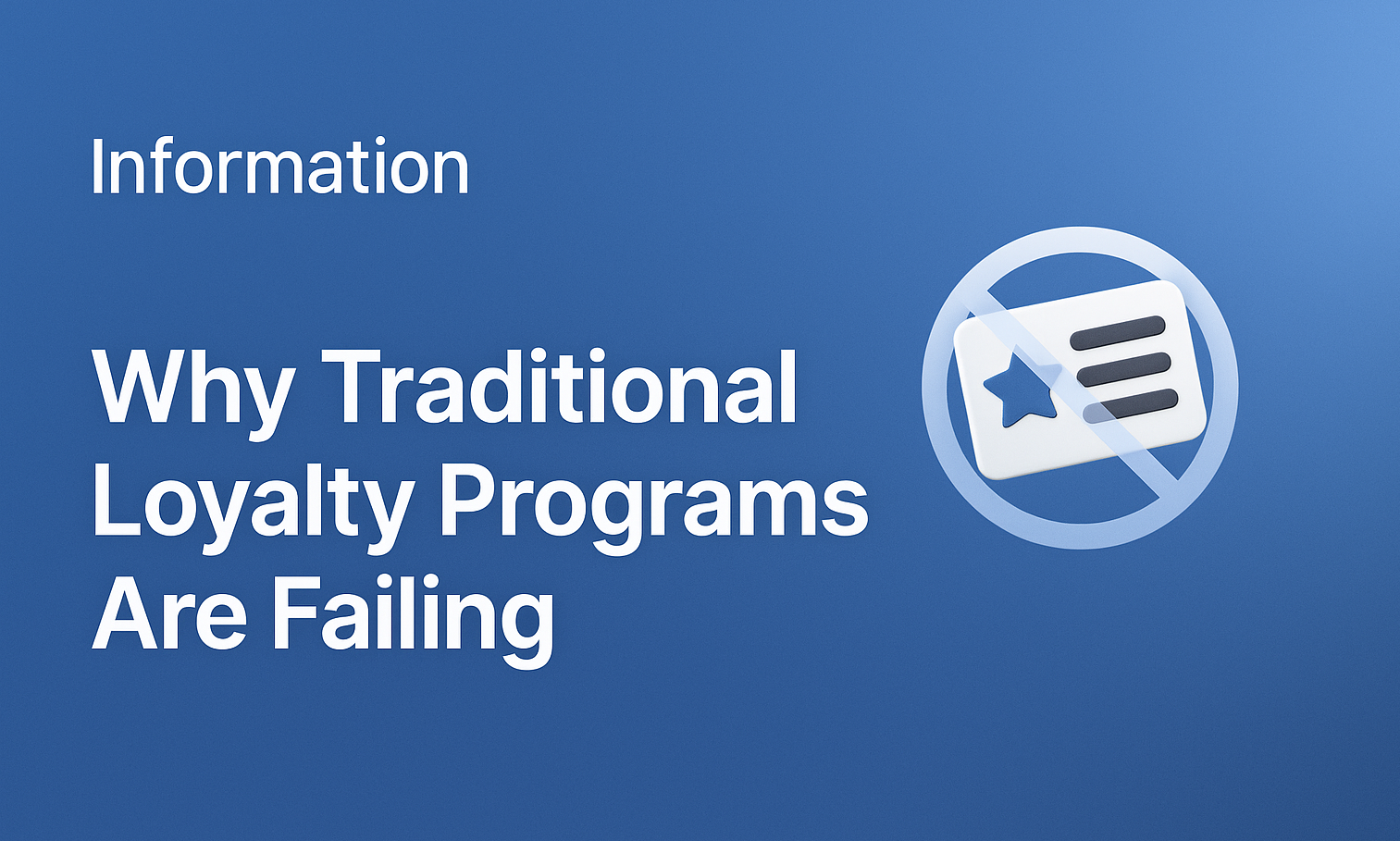Why Traditional Loyalty Programs Are Failing

For years, loyalty programs have been the default strategy for keeping customers engaged. Airlines introduced frequent flyer miles, retailers rolled out point systems, and brands across every industry copied the model. But while loyalty programs have become more common, their effectiveness has sharply declined.
Consumers have changed. Expectations have evolved. Yet most loyalty systems remain stuck in the past.
Today, brands are discovering a hard truth: traditional loyalty programs no longer create loyalty. They generate transactions, not relationships. They offer rewards, not belonging. And in a world where consumers gravitate toward brands that represent identity, culture, and shared values, the old model is no longer enough.
This raises an important question.
Why do traditional loyalty programs fail, and what needs to replace them?
Below is a deep look into the structural flaws of legacy loyalty systems and why modern brands must rethink how they engage their communities.
Traditional loyalty programs do not create emotional investment
Points and discounts may encourage repeat purchases, but they do not make customers feel connected to a brand. Most consumers today belong to several loyalty programs but identify with none of them.
A discount is forgotten the moment it is used. Belonging, however, lasts.
Emotional loyalty comes from feeling valued, recognized, and part of a shared culture. Modern community-driven brands like:
- Daily Paper
- YoungLA
- Nude Projects
- Starbucks
- Gymshark
- Polaroid
- Lego
…did not grow because of discounts. They grew through identity, community, exclusivity, and storytelling. Consumers want to belong, not just buy. Traditional loyalty systems, focused on transactions, cannot meet that expectation.
Discounts reduce brand value
Heavy discounting has become the standard loyalty “benefit”.
But it comes with a massive cost: it trains customers to wait for markdowns instead of paying full price.
This creates a cycle where:
- Loyalty reduces margins
- Discounts undermine perceived value
- The brand feels less premium
- Customers shop based on price, not connection
A loyalty model built on discount incentives undermines the very brand it is supposed to strengthen. Brands spend millions to build identity, quality, and storytelling, only to dismantle it with a coupon.
Loyalty programs keep customers passive
In the traditional model, customers participate only by spending money. There is no mechanism for:
- co-creation
- community-driven promotions
- referrals
- ambassador behavior
- social engagement
- user-generated content
- custom experiences
Yet these behaviors are the strongest predictors of long-term loyalty. Brands thrive when customers amplify their story, not when they accumulate points. Modern loyalty is participatory. Traditional loyalty is transactional.
Traditional programs are disconnected from the brand identity
Traditional loyalty programs are often generic, template-based, plug-and-play systems that look identical across industries, resulting in a commoditized experience that feels disconnected from a brand’s identity.
In contrast, the brands winning today’s youth segments succeed not because they are loyalty-driven but because they are culture-driven. A loyalty program, therefore, should feel like an authentic extension of the brand’s world rather than a generic add-on.
No real exclusivity or status
One of the strongest human motivators in consumer behavior is exclusivity.
People want access to:
- member-only drops
- early releases
- limited editions
- private events
- hidden product tiers
- real status within a community
Traditional loyalty programs rarely offer meaningful exclusivity. Most programs give the same discounts to everyone with minimal differentiation.
Modern consumers want to feel part of a circle, not a mailing list.
Fragmented and shallow data
Legacy loyalty platforms typically track points, purchases, and redemptions, but they fail to capture the full picture of customer engagement.
Modern brands need insights into:
- advocacy
- referrals
- social participation
- cross-brand behavior
- community interactions
- membership lifecycle
- retention health
Traditional systems measure the transaction. Modern loyalty requires measuring the relationship.
Loyalty programs are not built for collaboration
The modern consumer doesn't belong to a single brand. They belong to ecosystems:
- Streetwear merges with fitness.
- Wellness merges with lifestyle.
- Creators collaborate with apparel brands.
- Energy drink companies partner with athletes.
Traditional loyalty programs cannot enable cross-brand partnerships or shared community experiences.
Modern loyalty thrives on collaboration. Traditional loyalty is siloed.
The Result: Loyalty That Doesn’t Last
Traditional loyalty programs create customers who return when convenient. They do not create members who stay, advocate, and engage.
- The loyalty feels shallow.
- The connection feels temporary.
- The brand becomes interchangeable.
In an era where communities define brand power, loyalty cannot rely on discounts or point systems.
Something new is needed.
- A model built around identity, belonging, access, and participation.
- A system that strengthens brand culture rather than competing with it.
- A modern loyalty framework that aligns with how consumers already behave and what they already value.
And that is why an entirely new generation of loyalty solutions is emerging.